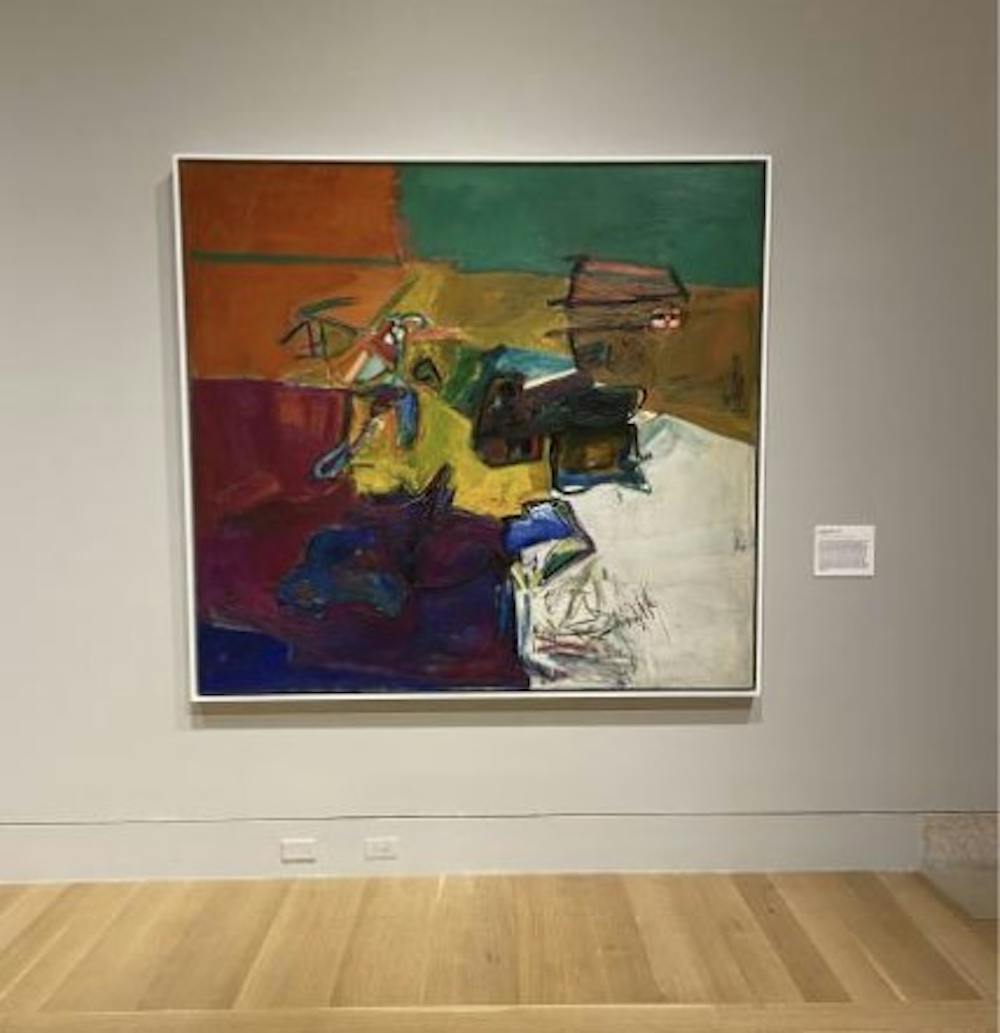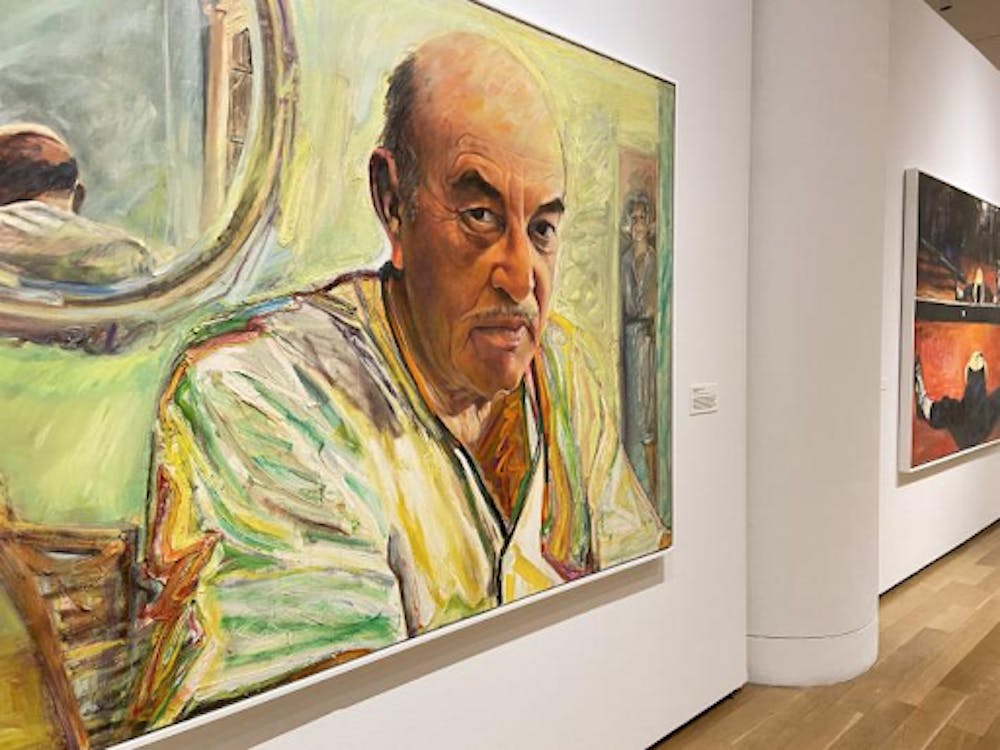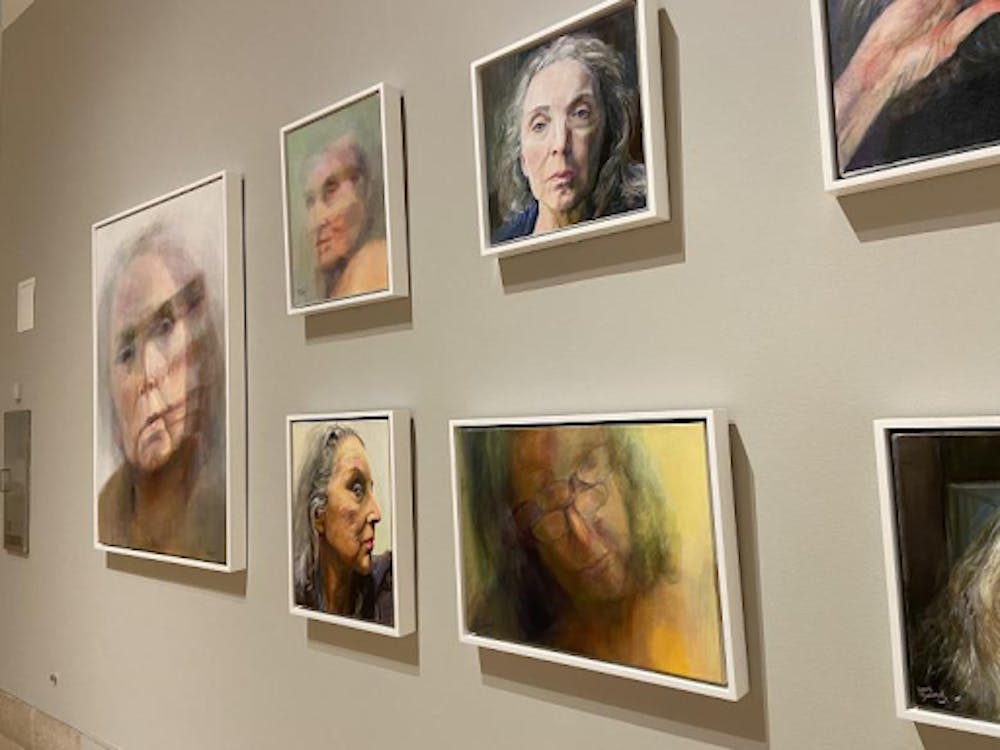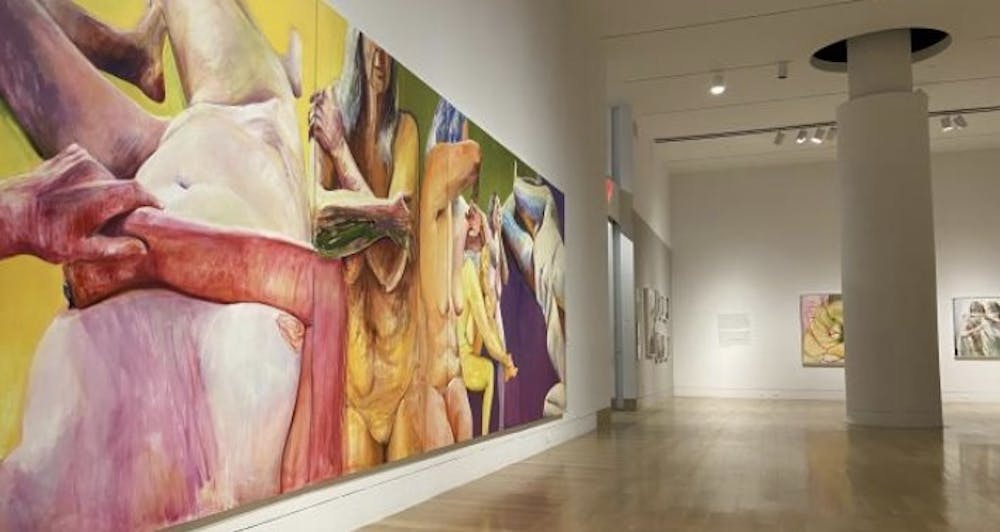On October 28, 2021, The Pennsylvania Academy of the Fine Arts debuted its new retrospective of American feminist painter Joan Semmel, entitled Joan Semmel: Skin in the Game. The first such display of Semmel's work in her six–decade career, the exhibit openly brandishes an erotic abstraction that offers a candid look at the female body, disputing the male gaze.
Your eye first catches an 8x24 artistic summation of Semmel’s career hanging proudly on the wall—it proclaims her as a trailblazer for erotic female art depicting numerous renditions of Semmel's naked form in evocative color. It’s a fitting introduction to what the exhibit will offer—much of her work explores the human form through a feminist lens. Immediately, you realize that you’re in for Semmel’s feminist take of the sexual experience.

As you begin to walk through the approximately 40 paintings in which line PAFA’s walls, you notice that her early work is classic expressionism. Her painting Peril Infinito (1966) features the characteristic vivid colors and exaggerated strokes that define the form, which Semmel herself describes as “introspective” and a reflection of the “kind of isolated life that I had lived in Spain” according to the work's label. It fails to hint at the blend of expressionism and eroticism that will mark Semmel’s later works, which stray from the stark forms and geometric pattern that make this piece; however, as you move through the exhibit, her early works are characterized by her bold strokes, colors, and subjectivity.
Delving deeper, you stumble upon Semmel’s Sex Paintings (1971), an early take on her future Erotic Series (1972–1973), both of which portray heterosexual couples in the act of sex. Sex Paintings capitalizes off vivid, unnatural colors as Semmel explores her definition of eroticism amid the rampant female sexual repression of the time, sketching partners in intimate positions. Semmel notes that her inspiration for these abstract representations was her desire “to find an erotic visual language that would speak to women” after returning from Spain to a country that misrepresented and objectified the female body. Her Erotic Series takes these large–scale portraits to the next level, being a touch more realistic despite retaining the vivid, unnatural colors seen in Sex Paintings in her attempt to paint the intimate encounter through the female eye.
Her subsequent Self Image series (1974–1979), which consists of explicit self-portraits of the American artist looking down at her body, contradicts the constructed beauty of Hollywood from unique angles as Semmel paints herself. A notable deviation from her abstraction thus far, it’s a direct challenge to Western culture at the time, which idealized women’s bodies and beauty. Her most well–known work to date, the series is a cry for female autonomy—she is seeing her own body, depicting it from her own perspective rather than from the perspective of the patriarchy. It marks her attempt to “reimagine the nude without objectifying the person.”

As you confront her later work, you learn it is just as exploratory with her Gymnasium (1986–1987) and Locker–Room Series (1988–1991), which depict nude female bodies through the view of a mirror (an early form of her With Camera series). She attempts to depict the disparity between reality and the point of view.
The Overlays series is an exception to the artist’s body of work that illustrates her propensity for innovation. It takes the nude female bodies from her Locker–Room series and overlays it with paintings from her Erotic Series—a unique marriage between the two. It’s chaotic. It’s experimental, but it works. Her exploration into transparencies marks a new direction for her career whether or not her Overlays series is an “outlier” as PAFA's walls call it.

Towards the end of the exhibit, you come across Heads (2007–2013), which includes various self-portraits of the artist from the neck up, complemented by a summary of her prolific career as a pioneer for the feminist nude. Intimate in a different way, the mirage of hazy images of the artist’s face adopts some of the realism visible in her With Camera series over her traditional abstracts. She appears to be in motion—each captures the transformative feel of aging as she honestly depicts what she sees in the mirror.
Semmel, who is now in her late 80s, has continued to explore female sexuality in her work, particularly depicting her body as it ages and consequently transforms. Her candid portrayal of the female body and sexual experience through a feminist lens has paved the way for the expressionist nude and eroticism in art, confronting the patriarchal view of womanhood.
Joan Semmel: Skin in the Game is a provocative challenge to tradition as is the artist’s work itself. It unapologetically depicts womanhood in its purest form as it navigates how to appreciate and fall in love with the fickle human body. It’s most certainly a gain for female empowerment and a frank representation of the struggle to come into one’s own, specifically in the face of objectification by the patriarchy.
Written on PAFA’s walls, Semmel, says, “I was interested in how my position as a woman affected my choices as an artist. I couldn’t possibly relate the same way as a man would, for instance, to the genre of nude. By using myself as the model those differences immediately became self-evident.”
What PAFA’s new exhibit shows is that she undoubtedly succeeded in this goal in her artistic portrayal of the female human form which works to distance itself from objectification. Open until April 2022, Joan Semmel: Skin in the Game is most certainly worth experiencing.

